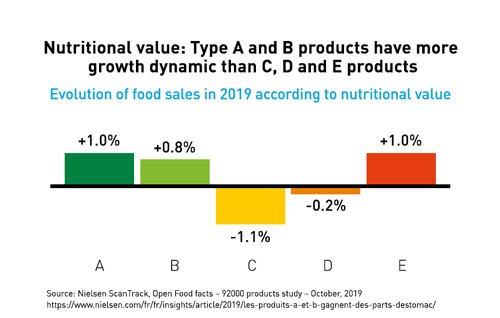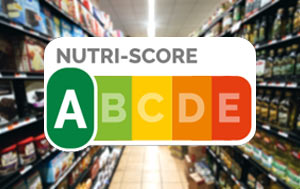Nutri-Score ratings continue to help consumers around Europe to make healthier, more informed choices about the food and drink they buy. The simple and colourful A-to-E (A being the best, and E the worst) front-of-packaging label is providing a guide to weighing up the most nutritious options on the shelves in an increasing number of European countries.
More than three years after launching in France, Nutri-score is already influencing purchase decision, with one in seven French consumers saying they pay attention to ratings. Products scored A and B have shown positive growth dynamics and increasing market shares1.
Typically, products in the same category tend to have the same Nutri-Score. So, if ice creams tend to be a D, and some yoghurts get a C, how can your dairy products stand out from the crowd?
Our dairy formulation experts at Tate & Lyle understand that, depending on the existing formulation, there are some small adjustments that can be made to improve a dairy product’s Nutri-Score rating. Criteria for a positive rating includes lower energy, lower sugars, and lower saturated fats, as well as higher protein, higher fruit, vegetables, pulses and nuts, and higher fibre content.
Learn more about how a Nutri-Score rating is determined, here
Bridging the fibre gap is a key challenge for food and beverage manufacturers, as consumers are increasingly aware of the shortfall in their everyday diets.
Our work on fibre fortification, as well as sugar and calorie reduction, is aimed at helping people all over the world make healthier and tastier food and drink choices, and this is especially true in the dairy category, where products range from indulgent desserts, to nutritious beverages and everything in between.
Our dairy experts have been evaluating the nutrition facts of several dairy products currently sold in Europe. For example, the formulation of a vanilla ice cream sold in France is currently showing a ‘D’ Nutri-Score rating. With as little as 2.6g per 100g of PROMITOR® Soluble Fibre it’s possible to bump up the product’s rating to a C.
Similarly, we determined that a well-known cream dessert brand could be boosted from a C-rated formulation to a B, by adding 2.9g (per 100g), and even to an A, with 6.9g (per 100g) of PROMITOR® Soluble Fibre.
Just adding a bit of fibres to dairy products is certainly one of the easiest and most cost-effective ways to re-balance the product recipe and improve its Nutri-Score. However, not all fibres are equal, as their features can also add some formulation challenges. PROMITOR® Soluble Fibre is very easy-to-use because it has little to no impact on taste, texture or colour. It works very well in dairy products thanks to heat and acid stability. Consumer-friendly labelling options are helping manufacturers be confident that their brands will remain appealing.
Would you like help calculating the current Nutri-Score rating of your products, or support improving their nutritional profile? The Tate & Lyle team can help you go a step further on Nutri-Score by reducing sugars and fats while preserving the quality and great taste of your products.
1. Source: Nielsen ScanTrack, Open Food facts – 92000 products study – October, 2019


